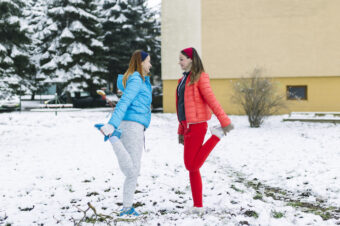

Smart Pacing Strategy Tips for Summer Races
BlogOutdoorProduct Reviews/Top Ten Lists/Resources/TipsRunning May 29, 2025 Lauren Keating 0

The summer is one of the best seasons to race. With extended daylight hours and more time to dedicate to training, many athletes want to break their PRs as they continue competing. However, summer weather means soaring temperatures and increased humidity, which runs the risk of heat exhaustion. In these conditions, pacing — how you manage your effort throughout a race — becomes especially important.
The goal is to learn how to adjust your pace to continue to perform well when racing over the summer.
Here are key pacing strategy tips youth runners should be aware of before tackling races in the summer heat.
1. Be Conservative
When temperatures rise, the body works harder to cool itself down. That means the same pace you run in cooler weather feels more difficult in the heat. For summer races, it’s smart to start at a much slower pace than usual, especially in the first half of the race. Then kick it up a notice to be able to finish strong for the remainder of the race.
Remember, going out too fast can lead to overheating, an elevated heart rate, and a tough struggle to finish strong.
Tip: Use the “talk test” during early efforts in practice: if you can speak in short sentences without gasping, your pace is likely manageable for race day.
2. Adjust Your Goal Pace
All runners have a goal pace in mind when chasing down a race day PR. Think about the weather conditions for race day and be practical. If it’s especially hot or humid on race day, don’t expect to hit your usual personal best pace.
Scaling back doesn’t mean you’re slower — it just means your body is prioritizing survival and thermoregulation.
Tip: For every 5–10°F above 60°F, consider slowing your race pace by 5–10 seconds per mile, especially for events longer than 5K.
3. Break the Race Into Segments
Dividing the race into manageable chunks can help with focus and pacing. Mentally breaking a 1-mile race into four 400-meter efforts, or a 5K into three 1-mile sections plus a final push, allows young runners to monitor their energy and effort at key intervals. This is a great strategy for knowing when to be more conservative and when to give a little kick.
Tip: Use mental cues like envisioning being relaxed for the first half, “stay strong” in the middle, and give it a kick during the final stretch.
4. Listen to Your Body, Not Just Your Watch
While technology like GPS watches can be helpful, it’s important for youth runners to also develop internal pacing. This means being aware and in tune with how you feel during the run. Be mindful of breathing and perceived exertion.
Disregard your watch because, in extreme heat, your heart rate rises quickly. What looks like a “slow” pace on your watch may actually be the right pace for safety and performance.
Tip: If you feel dizzy, lightheaded, or overly fatigued, it’s okay to slow down or even stop.
5. Use the Course to Your Advantage
Look for shaded areas, slight downhills, or sections with a breeze to recover or slightly pick up the pace without pushing too hard for 5ks and other road races. Slow down slightly on sunny or uphill stretches to conserve energy.
6. Stay Hydrated
Hydrate before, during, and after the race. For longer events, small sips of water or electrolyte drinks at aid stations can make a big difference. The key is not to drink too much as this can cause cramps and discomfort.
7. Train Pacing in Practice
Good race pacing doesn’t just happen on race day — it’s built-in practice. Run in all weather conditions, even when it’s extremely hot. However, remember to dial back the pace and distance. Severe temperatures aren’t the time to set a new PR.
Vary training to include intervals, progression runs, and leave the watch at home to run based on effort and feeling not time.
Tip: Coaches can make pacing fun by setting up pace-based relays or having runners guess their splits.
Final Thoughts
Summer racing is an exciting time for youth runners, but it requires strategy. By adjusting pacing based on weather, listening to the body, and practicing consistency in training, young athletes can race safely and confidently — even in the heat.









No comments so far.
Be first to leave comment below.